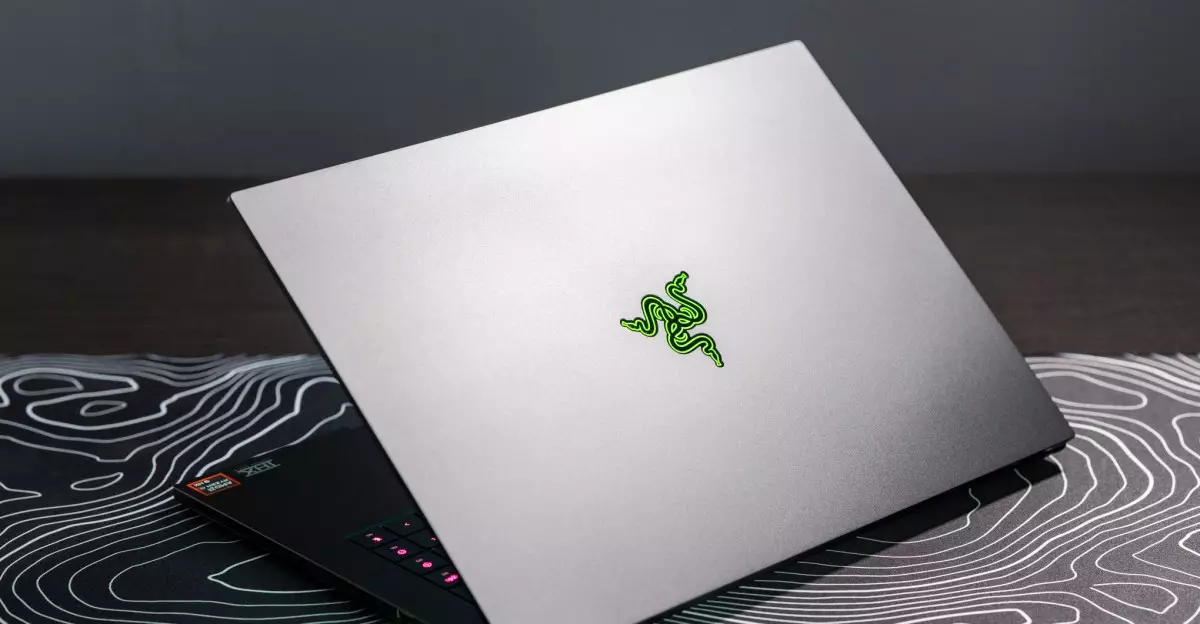The launch of the Razer Blade 16 heralds an exciting evolution in the landscape of gaming laptops, particularly for those who crave the aesthetic of a traditional laptop fused with high-performance gaming capabilities. Razer’s updated design—thinner and lighter—harks back to a time when mobile gaming meant sacrificing form for function. Rather than being a bulky representation of gaming hardware, the Blade 16 redefines what to expect from a gaming notebook. Its impressive Intel Core i9 13th Gen CPU and Nvidia RTX 5090 GPU create a potent combination for gamers and content creators alike, while the striking chassis brings an elegant touch previously missing in most high-performance machines.
However, at a staggering price of $4,499.99, one must question whether this laptop provides sufficient value for its lofty cost. While aesthetics are certainly essential, a powerful setup is useless if the performance is lackluster, particularly in everyday tasks. For the price, users expect seamless transition from gaming to productivity, and it begs the question: can the Blade 16 genuinely deliver?
Aesthetic Appeal Meets Performance
Upon first glance, the Razer Blade 16 is undeniably stunning. The 16-inch OLED display, boasting a 2560 x 1600 resolution with an exceptional 240Hz refresh rate, is a feast for the eyes. Colors are rich, the contrast is striking, and it’s palpable how well it serves both gaming and design tasks. Coupled with a sleek chassis that has managed to shave off 7mm and 0.8 pounds from its predecessor, it distinguishes itself from a sea of lesser gaming laptops that often prioritize bulk over beauty.
However, with that beauty comes an impressive suite of features and certain skirmishes that simply cannot be ignored. The keyboard is generally well-received but has its shortcomings—including a baffling column of macro keys that disrupt the traditional placement of the arrow keys. Such missteps indicate a recurring flaw in the design philosophy of Razer’s gaming series, where aesthetics sometimes overshadow functionality. A pleasurable typing experience should guarantee efficiency, yet for some, this new arrangement could easily lead to unnecessary frustration.
The Price of Power: Performance Concerns
One of the most debated aspects of any high-end gaming laptop is its thermal management and power efficiency, and the Razer Blade 16 is no exception. While the RTX 5090 GPU has garnered early praise due to its impressive power efficiency—reportedly 20% more effective than its predecessor—the laptop’s overall battery life raises eyebrows. Many users have observed that even with integrated graphics during light tasks, the Blade struggles to hit basic productivity milestones, such as completing a full workday without needing a charge.
Contrast this with competitors in the market, particularly Apple’s MacBook Pro line, which provides remarkable battery longevity while performing creative tasks. What’s striking is that users have reported upwards of eight hours of productivity using devices that cost significantly less than the Blade 16. Finding a reliable, all-purpose solution while weighing portability against gaming power can be quite the conundrum for prospective buyers.
Can You Truly Justify the Investment?
For $4,500, consumers expect perfection across both creative and gaming tasks. This laptop aspires to be a one-stop powerhouse, performing adequately in both realms, but the early signs of instability—including random crashes during light use—compromise that image. Technological marvels should minimize compromises rather than emphasize them, so consumers are left pondering if this truly warrants the price tag.
In today’s market, one might consider purchasing a more reasonably priced dedicated gaming laptop and a capable productivity machine for less than the price of the Blade 16. Yet, in an era where versatility is key, the notion of owning a singular device capable of handling all tasks is undeniably appealing. The Blade 16 creates an enticing visual narrative that begs for attention, but it also raises questions of practicality and longevity that enthusiasts must take into account.
The initial impressions posit a complex tapestry of excitement mixed with caution. While the Blade 16 dazzles with its performance potential and beautiful design, the issues present in early tests cast a shadow of uncertainty. Buyers who desire an all-in-one, top-tier experience may find a dream, but at what cost? As further reviews emerge, clarifying its standing in a crowded market, one cannot help but ponder: is the Razer Blade 16 a pioneering force or another overhyped gaming laptop? The verdict may well depend on personal priorities and whether those desires can withstand the rigors of day-to-day use.

